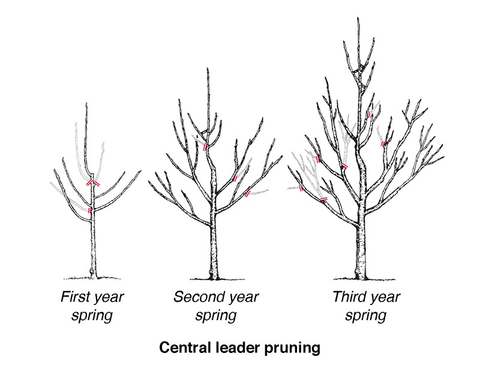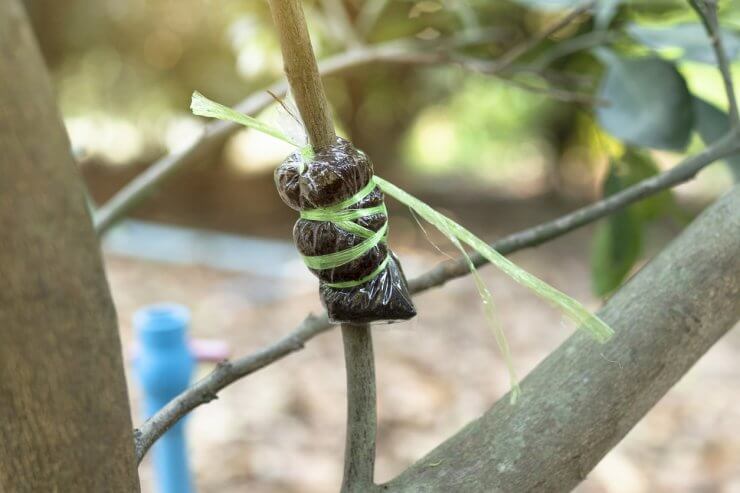Benefits of cloning an apple tree
Cloning an apple tree can offer several benefits for growers. Firstly, it ensures the preservation of specific desired traits, such as a particular taste, color, or disease resistance, which can be crucial for commercial success. Secondly, it allows for consistent propagation of the desired apple variety, guaranteeing uniformity and quality. Lastly, cloning provides a faster and more efficient method of producing new apple trees compared to traditional methods like seed propagation. By cloning, growers can save time and effort while achieving reliable outcomes.

Different methods of apple tree cloning
There are a few different methods that can be used to clone an apple tree. One common approach is grafting, where a scion (the desired apple variety) is inserted onto a rootstock. This method allows for the combination of desired traits from different trees. Another common method is layering, where a branch is buried in the ground to develop roots before being separated from the mother tree. This method is suitable for apple trees with flexible branches. Additionally, tissue culture can be used to propagate apple trees in a controlled laboratory setting, allowing for large-scale production of identical clones.

Selecting the Parent Tree
Choosing a healthy and productive apple tree
To clone an apple tree successfully, it is essential to start with a healthy and productive parent tree. Look for a tree that shows vigorous growth, has a good crop yield, and is free from any signs of disease or pest infestation. The overall health and vitality of the parent tree will significantly influence the success of the cloning process.
Identifying the desired traits for cloning
When selecting a parent tree for cloning, it is crucial to identify and prioritize the desired traits you want to pass on to the cloned trees. These traits could include specific taste characteristics, coloration, disease resistance, or growth habits. By carefully considering these traits, you can ensure that your cloned apple trees possess the qualities that align with your objectives and meet the needs of your

Preparing for Cloning
Gathering necessary tools and materials
Before starting the cloning process, it is essential to gather all the necessary tools and materials. You will need a sharp pruning shear or grafting knife to make precise cuts, a rooting hormone to stimulate root growth, and grafting tape or rubber bands to secure the grafts. Additionally, having a clean and sterile work area is crucial to prevent any contamination that could hinder the success of the cloning.
Creating a suitable environment for successful cloning
To ensure successful cloning of apple trees, it is important to create a suitable environment. This includes providing adequate lighting, temperature, and humidity conditions. Keeping the temperature around 70°F (21°C) and humidity levels around 80% promotes optimal root development. You can place the cloned trees in a greenhouse or use a humidity dome or plastic cover to create a controlled environment. Regularly monitoring and adjusting these environmental factors will increase the chances of successful cloning.

Methods of Apple Tree Cloning
Grafting: Whip and tongue technique
Grafting is a common method used to clone apple trees. The whip and tongue technique involves making precise cuts on both the scion (the part being cloned) and the rootstock (the existing tree). The two pieces are then joined together, ensuring the cambium layers match, and secured with grafting tape or rubber bands. This method allows for the transfer of desired characteristics from the scion to the rootstock, resulting in a genetically identical clone.
Budding: T-budding process
Another method of apple tree cloning is budding, specifically the T-budding process. In this method, a single bud from the desired variety is inserted into a T-shaped incision on the rootstock. The bud is then secured with grafting tape or a rubber band. Over time, the bud will develop into a new branch with the same characteristics as the parent tree. This technique is commonly used in commercial apple tree production.
Both grafting and budding are effective methods of cloning apple trees. The choice of method depends on the specific requirements and goals of the cloning process. Proper technique, along with providing suitable environmental conditions, will increase the success rate of apple tree cloning.

Caring for Newly Cloned Trees
Providing proper nutrition and watering
To ensure the successful growth of newly cloned apple trees, it is crucial to provide them with proper nutrition and watering. These young trees have specific nutritional needs that should be met through regular fertilization. Using a balanced fertilizer will provide essential nutrients for healthy and vigorous growth. Additionally, proper watering is essential to keep the soil moist but not saturated, as excessive water can lead to root rot. Regular monitoring and adjustment of watering practices will help sustain the health of newly cloned trees.
Protecting the tree from pests and diseases
Newly cloned apple trees are vulnerable to pests and diseases, as they have not yet developed a strong defense system. Implementing preventive measures, such as applying organic pesticides and using physical barriers, can help protect the trees from potential threats. Regular inspection and timely action in case of any signs of pest infestation or disease will be necessary. Ensuring a healthy growing environment will promote the development of strong and resilient cloned apple trees.

Monitoring Growth and Development
When cloning an apple tree, it is important to monitor its growth and development to ensure successful grafting or budding. Regularly observe the tree for signs of successful integration between the scion and rootstock, such as new leaf growth or the formation of buds.
Observing signs of successful grafting or budding
Keep a close eye on the grafted area to ensure that it is healing properly and that the scion is successfully bonding with the rootstock. Look for signs of new shoots or buds emerging from the grafted area. These are indications that the cloning process is successful and the tree is growing.
Pruning and training the tree for desired shape
To shape the cloned apple tree according to your desired form, pruning and training are necessary. Regularly trim away any unwanted branches or excessive growth to allow for better airflow and sunlight penetration. As the tree grows, guide its branches using stakes or trellises to achieve the desired shape and structure.
By monitoring growth and development, along with proper pruning and training, you can ensure the successful cloning of apple trees and promote their overall health and productivity.

Conclusion
Monitoring the growth and development of cloned apple trees is crucial for successful grafting or budding. By observing signs of integration and healing in the grafted area, such as new shoots or buds, you can ensure the cloning process is successful. Additionally, pruning and training the tree according to your desired shape will promote better airflow and sunlight penetration. By following these tips, you can successfully clone apple trees and maintain their overall health and productivity.
Tips for Successful Apple Tree Cloning
- Regularly monitor the grafted area for signs of successful integration, such as new shoots or buds.
- Ensure the grafted area is healing properly and that the scion is bonding with the rootstock.
- Prune away any unwanted branches or excessive growth to promote better airflow and sunlight penetration.
- Guide the branches using stakes or trellises to achieve the desired shape and structure of the tree.
Common Challenges and Solutions
One common challenge in apple tree cloning is improper healing of the grafted area. To ensure successful healing, it is important to keep the grafted area clean and protected. Apply grafting wax or a suitable sealant to prevent infection and promote healing. If the tree shows signs of disease or poor growth, consult a professional arborist for guidance on appropriate treatments and solutions.
By following these tips and addressing common challenges, you can increase the likelihood of successful apple tree cloning and enjoy healthy and productive trees in your orchard.



